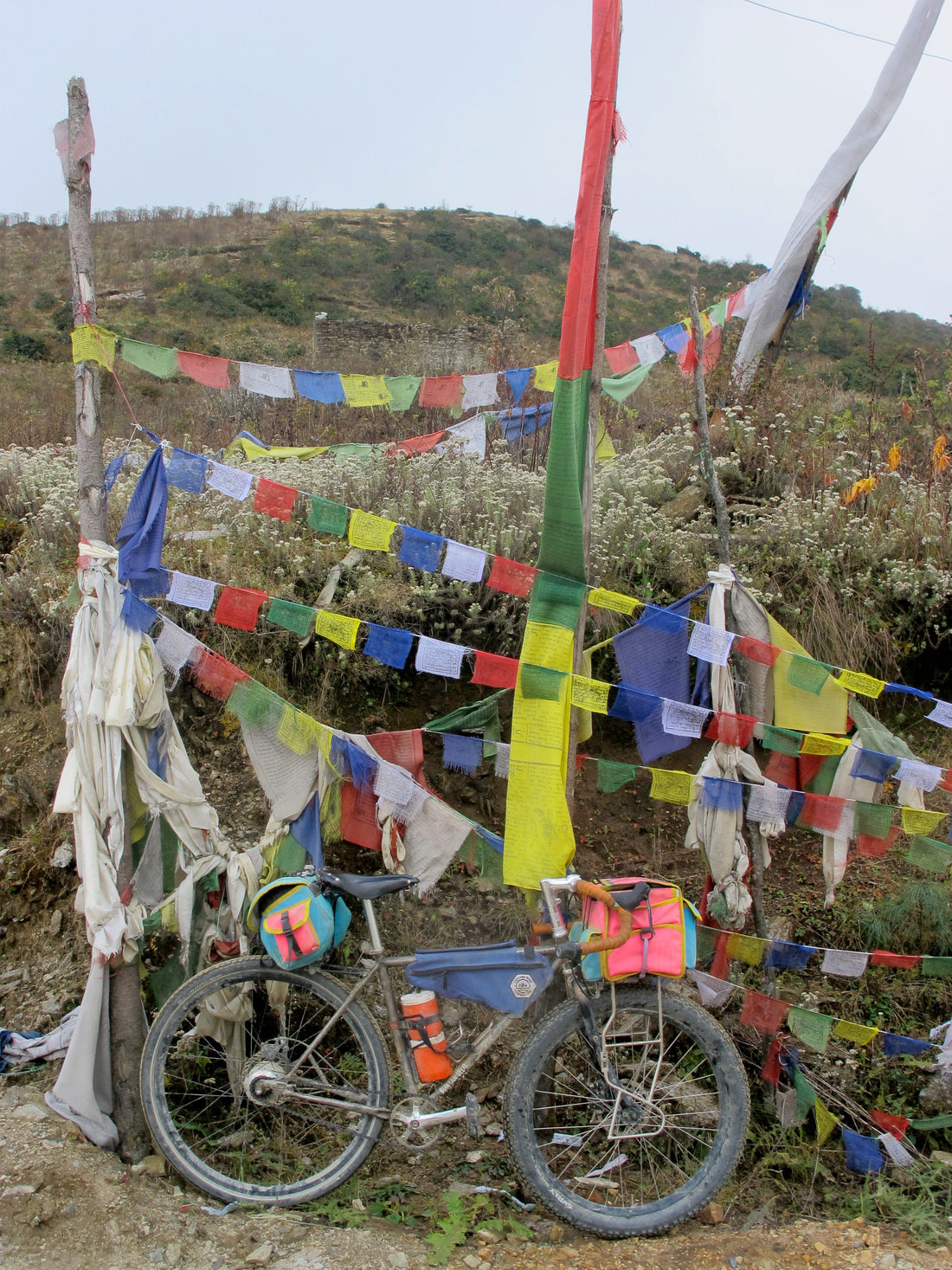Prayer Flags and High Passes - Swift Industries
Share

The first rule of traveling in Nepal is: don’t bring anything.
Famous last words on some adventures, but literally true in this populous, mobile, friendly, and enterprising nation. Even the smallest hamlet has a “tea house” or lodge. And while the accommodations are basic to say the least – generally not too different from camping – they are extremely cheap. It’s sort of like a cross between bike-packing and credit card touring. Since my style of travel leans heavily towards self-sufficiency, it took some getting used to.
We set out from New Delhi, India, a bit overloaded and determined to get out of the heat and crowds by heading into the Himalaya as quickly as possible. We pumped up our tires, oiled our chains, and put in long days toward the border.
Characteristically we had done no research about Nepal. We didn’t even have a map. So all the rice paddies, water buffalo and houses on stilts came as something of a surprise. As it turns out, Nepal has rather a lot of jungle lowlands. Complete with elephants, rhino, and tigers –or so we were told –we never saw any. The lowlands were beautiful and culturally diverse, but hot and humid, and the mountains were calling. So we kept up the long days, stopping only to swim. Making tracks for Annapurna, one of the two places we knew by name in the country (the other being Mt. Everest).
Matt had joined me in India largely because l was there (bike-packing in Ladack and Kashmir) but his interest was in Nepal. And its legendary mountains.
Several weeks in, and halfway across the country, we had seen exactly one other bideshi (or foreigner) so it was something of a shock to arrive in the idyllic tourist town of Phokara. Not only were there signs we could read, plenty of foreign travelers, fancy hotels, internet cafés, and other trappings of a world-class travel location; but restaurants which served food other than Dal Bhat: the national food of Nepal. We tarried for a week by the shores of a famously beautiful lake nestled among the foothills of the Himalaya, enjoying the wonders of western civilization, like espresso and salad.
According to our map, the route out of town was supposed to turn from jeep track to trail soon after Beni. But as we fought our way uphill on a dusty dirt road — full of slippery rock and loose cobbles– it became clear that the path was a rather popular motorbike destination. We were sharing the road with hordes of motorcyclists flogging totally inappropriate slick-tired street bikes up this decidedly difficult jeep track. The mottos were often doubled, and always right on the edge of out-of-control. I suppose l sound a bit curmudgeonly when l say I’m not sure if the popularity of the road was blessing or a curse. What I am sure of though, is that it led through some wild and beautiful country always in sight of snowcapped peaks. After a few days of continuous steep climbing, we reached the end of the road where we took a rest-day to acclimatize.
One rest day turned to two when we awoke to a nasty snow storm. We settled at the BobMarley hotel, eating what is quite possibly the best apple pie in Nepal. Fascinated, we watched pilgrims struggle past on their way to Mutkinath temple who moved along–suffering from altitude sickness and half naked in the freezing storm. Several appeared to be clad only in trash bags and shower sandals.
Sadly, the shivering pilgrims weren’t the only ones put out by the unseasonable storm. Some three-hundred tourist trekkers (and their guides and porters) decided to attempt the 5,416m (17,769 ft) pass despite the snow. Sixty people died in the blizzard. We watched as the survivors struggled into town, heroically carrying the weaker members of their teams.
The next day dawned cold and clear, turning all the slush into spectacular ice and rendering the trail impassible without crampons, especially while dragging bikes. The police closed the pass and set out on search-and-rescue missions.It was time to turn back and drop our gear in Katmandhou, with aims to head toward Mt Everest.
Our route to Everest dropped to 300 m above sea level before climbing to 4,000 meters at which point the road become passable only by foot. We ditched our bikes, gathered a few belongings, and set out on foot towards Mt. Everest. The unconventionally sparse gear we carried, coupled with my bare feet, made us the talk of the trail. We ended our trek in the unrivaled mountain beauty of Gokyo, a cute little town nestled between the worlds longest glacier and some stunningly beautiful sacred lakes.


Back at our waiting bikes we discovered that some unscrupulous passers by had lightened our load for us. Our bike bags were empty, so we made our way back to Katmandhou without even a patch kit to weigh us down.
Fast and light is just the way to do it in Nepal.
–Words by Goat, photos by Matt

There’s never a dull moment on Matt’s instagram feed or on his blog www.afewsketchymoments.com

and you’ll find Goat exploring the world at wandergoat.com






